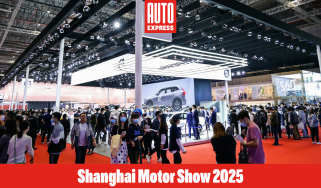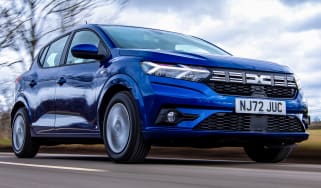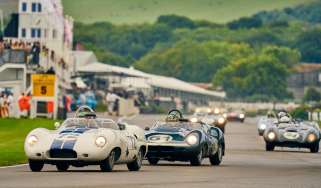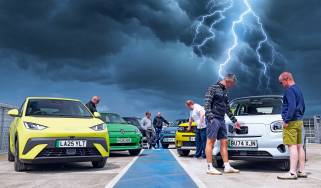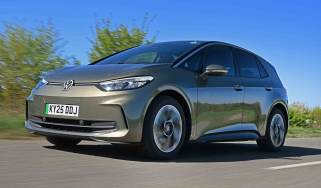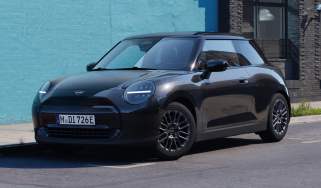New Range Rover revealed
All-new Range Rover is bigger and lighter, and it has made its public debut at the Paris Motor Show
Land Rover has unveiled the new Range Rover - and it's the most significant model to wear the famous badge yet.
Why? It's a whopping 420kg lighter than the car it replaces, despite measuring 27mm longer than the current car. And key to the weight loss is the extensive use of aluminium; almost the entire body is now made of the lightweight metal for the first time.
There's an all-new aluminium chassis underpinning it all, too, which means an overall weight of around 2,150kg. In fact, the bodyshell of the new Range Rover actually weighs less than that of the Evoque and the MINI Countryman.
Range Rover's new design language, established by the Evoque, is very much in evidence. While some familiar cues remain like the vertical side vents and boxy profile the narrow, swept-back headlights, less upright grille and sportier windscreen angle are recognisable from the baby Range Rover. With a Cd of 0.34, this is the most aerodynamically efficient Range Rover ever. A contrasting roof colour is available for the first time, too.
Inside, the new Range Rover echoes the elegant and simple cabin of the Evoque. The mess of confusing buttons on the centre console of the outgoing car has been replaced with a few dials for the climate control, and very little else. All the controls for the sat-nav and stereo have now moved on to an eight-inch dual-view touchscreen on the dash, surrounded by touch-sensitive 'hot key' buttons.
Material quality is improved, too. The dash is finished in high- quality leather, along with the door panels, the seats and even the headlining.
There's an all-new steering wheel half-finished with a choice of woods that match inserts placed throughout the cabin. One criticism of the old Range Rover was the limited legroom in the back, but an extra 120mm has been freed up for rear passengers, by stretching the wheelbase by 50mm.
It's around 20mm lower than before, too, which with longer rear doors makes climbing into the back is easier. Buyers also have the option of an Executive Class pack, inspired by the £120,000 Range Rover Ultimate. This consists of two luxurious massage seats in the rear, split by a wooden centre console.
Accessing the boot is simpler, as a powered split-tailgate is fitted as as standard. The bottom half is now shorter so it¹s easier to lean across, plus it¹s strong enough to sit or stand on.
There's very little wrong with the way the old Range Rover performs on the road, but Land Rover claims an improved air-suspension system and even greater refinement.
The weight saving is certain to sharpen up the handling, and adaptive dampers and retuned suspension will also help here.
The Range Rover will be more economical and faster than before, while an entry-level 270bhp V6 diesel will be added to the line-up for the first time. Fuel economy betters the TDV8¹s 30.1mpg, at around 40mpg, and CO2 emissions will be cut to below 200g/km.
A model powered by the new 3.0-litre supercharged V6 petrol engine could be available later, and a hybrid will eventually arrive, too.
The diesel and flagship supercharged petrol V8s from the outgoing line-up will be moved across unchanged, with the latter now capable of accelerating from 0-62mph in around five seconds.
Of course, the new Rangie will be just as capable off the road as on it thanks to central and rear-locking differentials, a deeper wading depth of one metre, and an updated Terrain Response system which can pick the best settings automatically.
Customers will be able to order the car shortly, with prices starting from around £65,000. Deliveries start early next year.
Find a car with the experts


